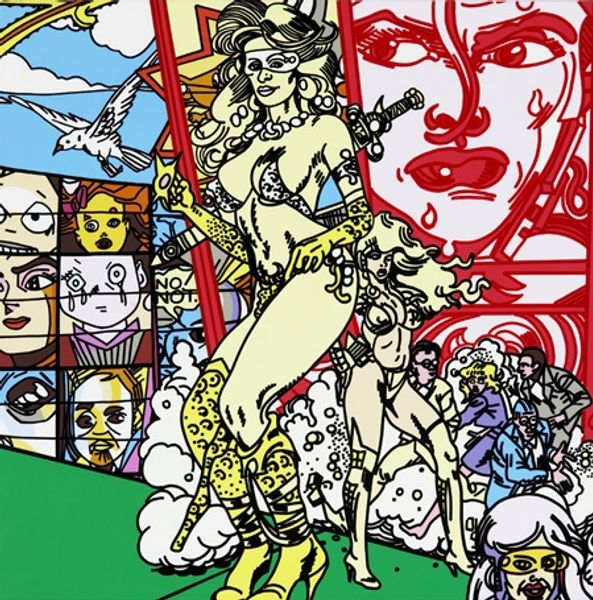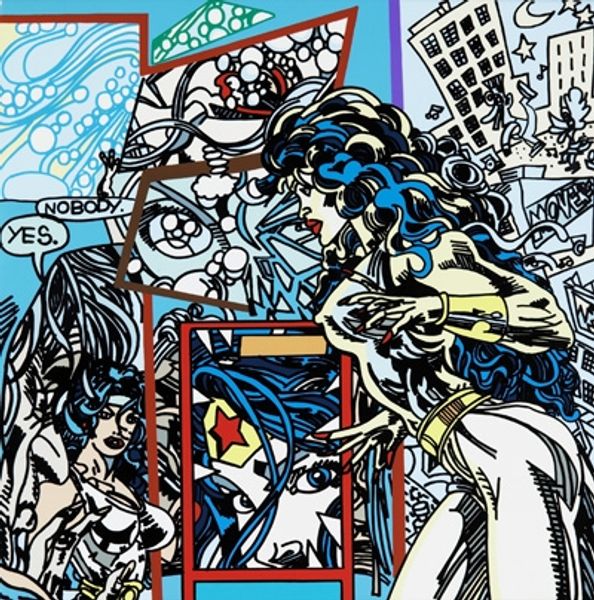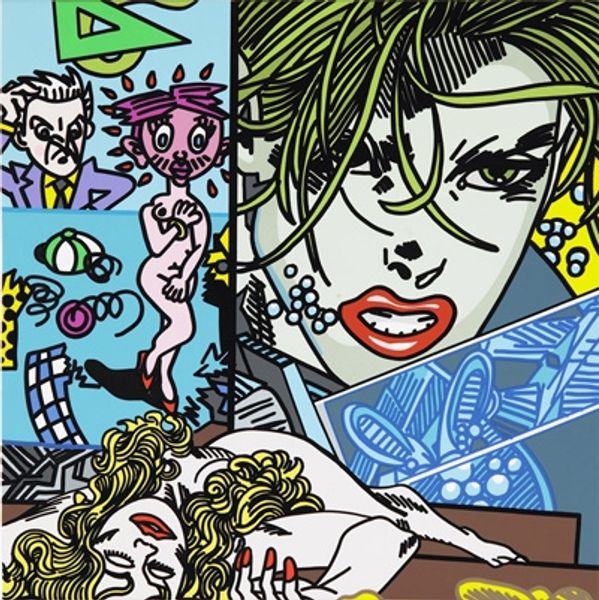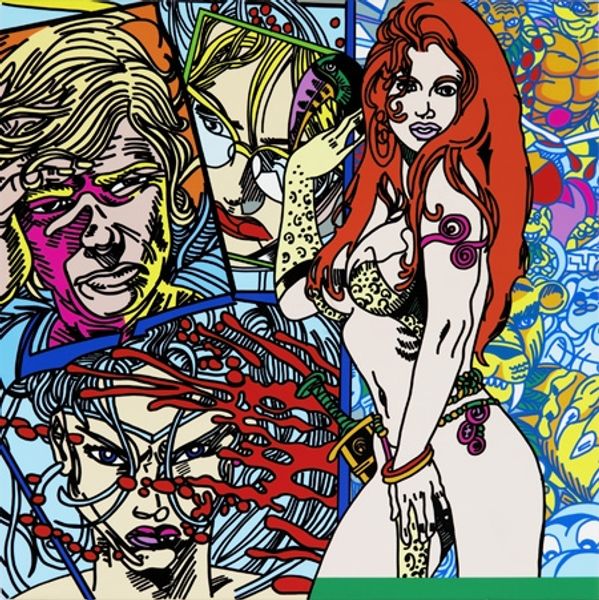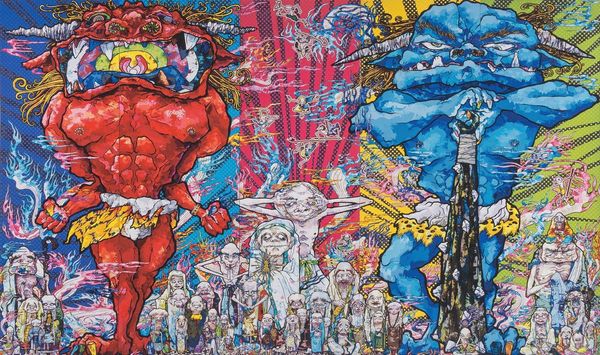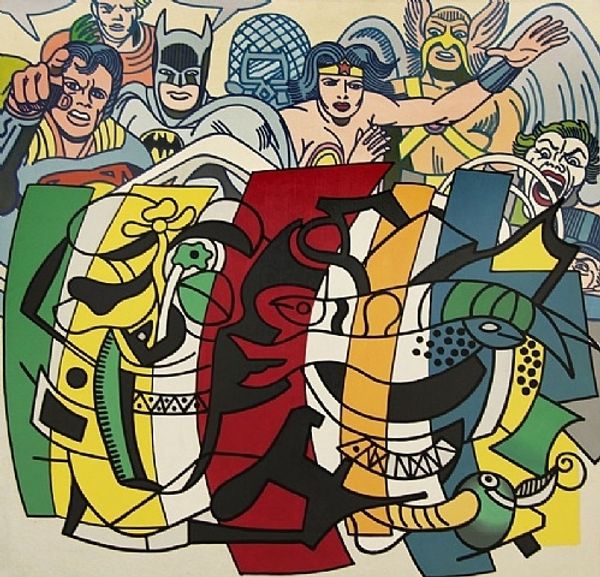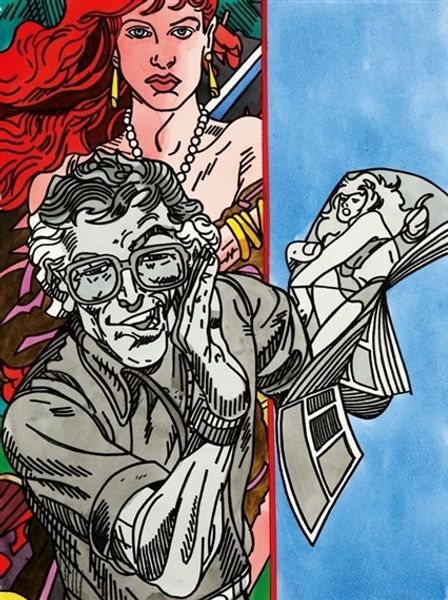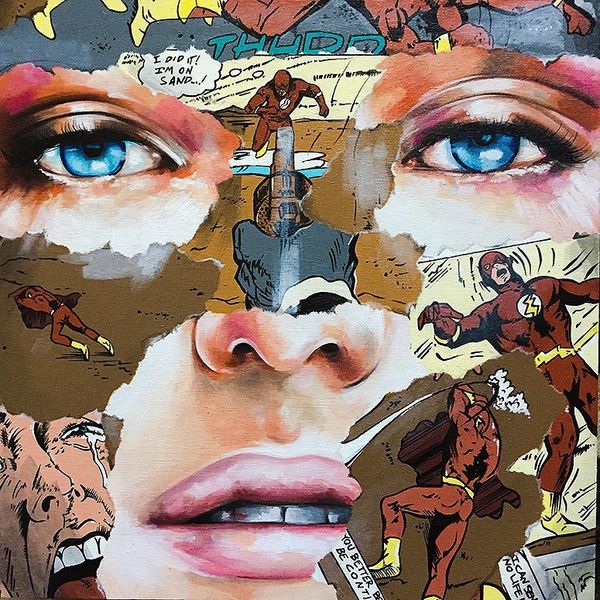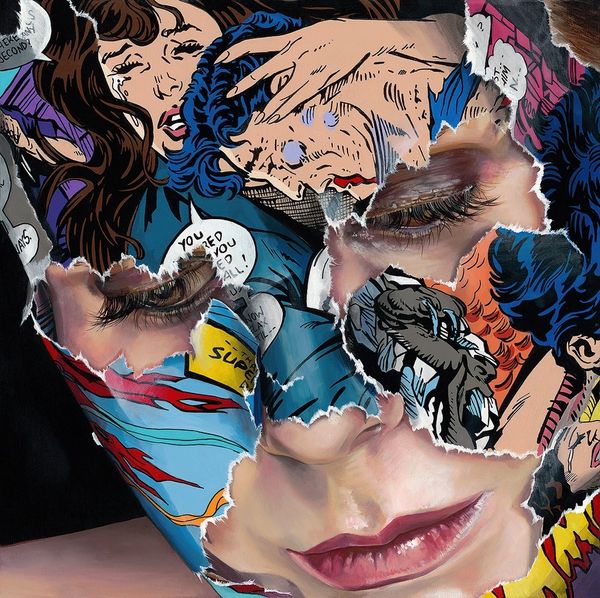
Copyright: Erro,Fair Use
Curator: "The Dream," a mixed-media artwork by Erró, completed in 2008. What strikes you initially about this composition? Editor: Utter chaos! A vibrant, overloaded canvas. I am captivated by the bold lines and blocks of flat color—it recalls Pop Art aesthetics, with an underlying hint of narrative tension in its comic style. Curator: Yes, Erró often appropriated imagery from comics, advertising, and political propaganda. In "The Dream," what icons or narratives seem dominant to you? Editor: I notice that female figure at the bottom center seems to anchor the piece. She is almost reclining, dreaming. Superimposed above her are layers of cartoon heroes and villains. She seems the nexus of it all. What’s her story, though? Curator: That figure draws from classical odalisque imagery – the passive, sexualized female form. However, she is surrounded by these heroic figures, suggesting a more complex relationship of power. The heroic archetypes reflect and also become, in turn, a dreamscape. Editor: Ah, a post-modern pastiche. It feels critical—almost a deconstruction of mythologies, and those from comic books are really the modern-day equivalents. The juxtaposition deflates any sense of authentic heroism and grandeur, doesn't it? Curator: Precisely. The artist creates a dialogue between art history and popular culture. Consider the layering, the sense of a world built from images recycled across media over decades. This evokes our cultural memory itself as collaged and contradictory. The title of ‘Dream’ adds another layer, because is the woman dreaming the heroes, or the artist showing us the heroic archetypes that dream us, the ones that shape us, both collectively and individually. Editor: Interesting. The formal properties amplify this tension; the sharp contrasts and visual density feel almost overwhelming. It evokes a sense of being inundated with information and cultural baggage. This image, while cartoon-based, doesn’t have a comfortable vibe. Curator: Indeed, comfort wasn't the artist's aim, perhaps. It feels quite generative, though; these layers of iconographies make up our world as a complex of shared, often contentious narratives. Editor: Well, I appreciate the way Erró turns seemingly disparate parts to an invitation for the viewer. Curator: Yes, as well as reminding us the importance of analyzing the visual culture that constantly envelops our minds.
Comments
No comments
Be the first to comment and join the conversation on the ultimate creative platform.
